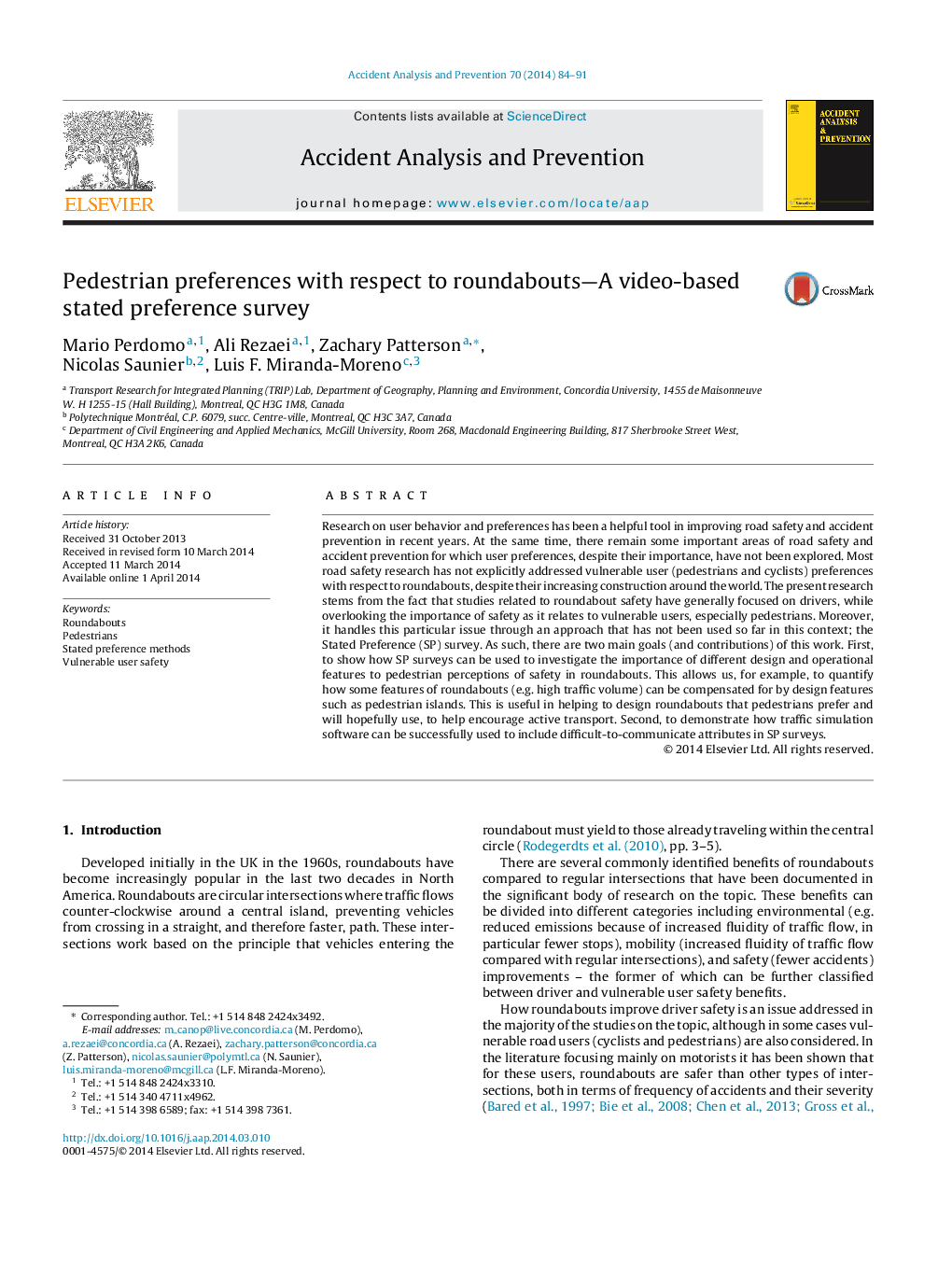| Article ID | Journal | Published Year | Pages | File Type |
|---|---|---|---|---|
| 572304 | Accident Analysis & Prevention | 2014 | 8 Pages |
•Use of Stated Preference techniques for analysing pedestrian preferences towards safety in roundabouts (approach that has not been used so far).•Use of VISSIM traffic micro-simulations to successfully include difficult-to-communicate attributes in Stated Preference web survey.•Quantification of the importance of different design and operational features to increase pedestrian safety perception in roundabouts.•Quantification of how some negative features of roundabouts can be compensated for by design features.•Aid to decision and policy making process related to roundabouts in the region.
Research on user behavior and preferences has been a helpful tool in improving road safety and accident prevention in recent years. At the same time, there remain some important areas of road safety and accident prevention for which user preferences, despite their importance, have not been explored. Most road safety research has not explicitly addressed vulnerable user (pedestrians and cyclists) preferences with respect to roundabouts, despite their increasing construction around the world. The present research stems from the fact that studies related to roundabout safety have generally focused on drivers, while overlooking the importance of safety as it relates to vulnerable users, especially pedestrians. Moreover, it handles this particular issue through an approach that has not been used so far in this context; the Stated Preference (SP) survey. As such, there are two main goals (and contributions) of this work. First, to show how SP surveys can be used to investigate the importance of different design and operational features to pedestrian perceptions of safety in roundabouts. This allows us, for example, to quantify how some features of roundabouts (e.g. high traffic volume) can be compensated for by design features such as pedestrian islands. This is useful in helping to design roundabouts that pedestrians prefer and will hopefully use, to help encourage active transport. Second, to demonstrate how traffic simulation software can be successfully used to include difficult-to-communicate attributes in SP surveys.
